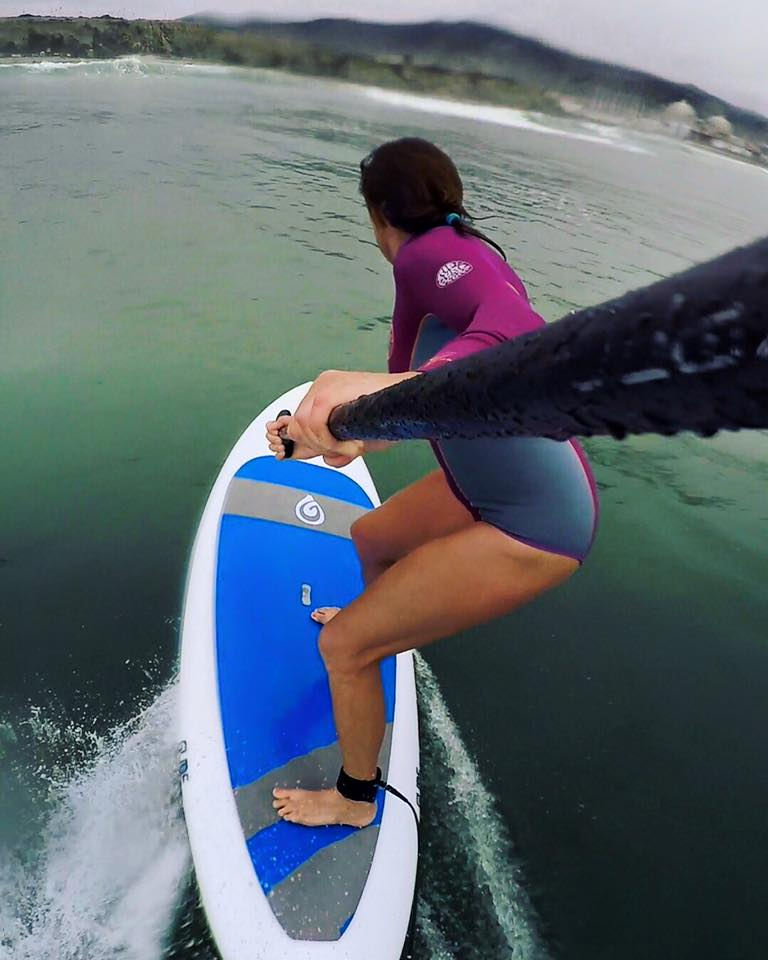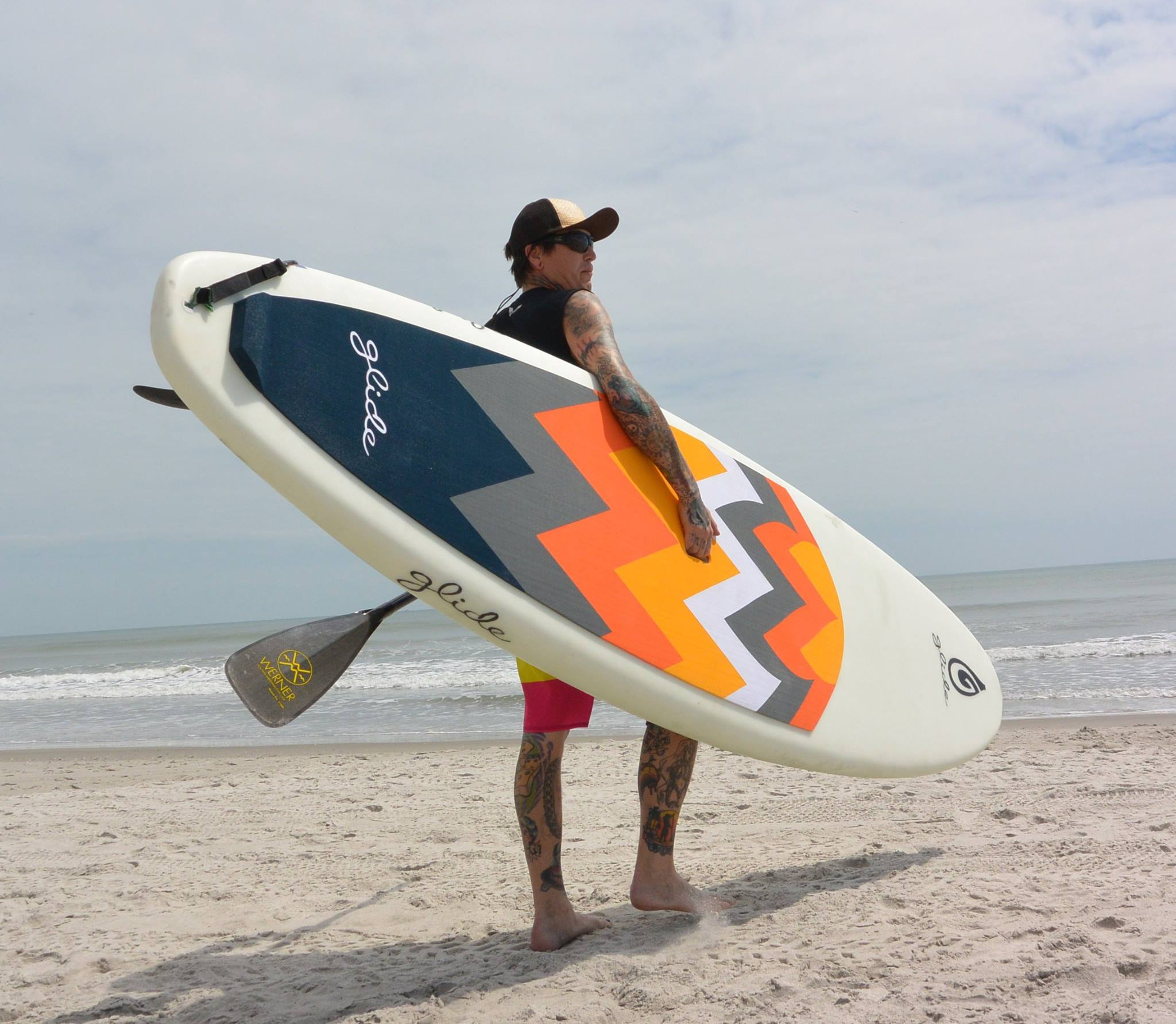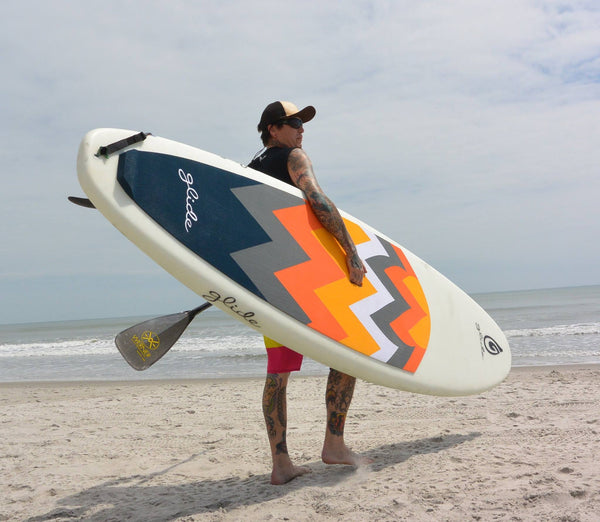
SUP Surfing: Riding Waves with a Stand Up Paddle Board
Stand Up Paddle (SUP) surfing represents a thrilling blend of traditional surfing and paddle boarding, offering a unique way to engage with the ocean's waves. Unlike conventional surfing, where riders start lying down on the board, SUP surfing begins in a standing position, utilizing a paddle for momentum and balance. This variant not only provides an excellent full-body workout but also grants surfers the advantage of a higher vantage point to spot incoming waves earlier. The versatility of SUP boards means they can be used in a variety of water conditions, from small, gentle rollers to larger, more challenging swells. As with any water sport, mastering SUP surfing requires practice, balance, and a respect for the sea's power. Whether you're gliding across a calm bay or carving through ocean waves, SUP surfing offers an exhilarating way to connect with the water.
SUP Surfing: Riding Waves with a Stand Up Paddle Board
Stand Up Paddle (SUP) surfing marries the excitement of wave riding with the versatility and balance challenges of stand-up paddleboarding. This water sport hybrid is not only an excellent full-body workout but also a unique way to interact with the ocean's undulating landscapes. SUP surfing stands out from traditional surfing by starting from a standing position, using a paddle for both propulsion and balance. This guide aims to unfold the exhilarating realm of SUP surf, from selecting the right gear to mastering the waves on your stand-up paddle board. For newcomers, our Beginner's Guide to Stand Up Paddle Boarding is an excellent starting point.
The Fundamentals of SUP Surfing Unlike traditional surfing, where the process begins with paddling in a prone position, SUP surfing demands you to maintain an upright stance on the board, utilizing a paddle for stability and momentum. This approach not only offers a superior vantage point for spotting incoming waves but also enhances stability, enabling the capture of smaller, gentler waves that traditional surfboards might bypass.
Selecting the Appropriate SUP Surfing Board When delving into SUP surfing, the choice of board significantly influences your experience. Here's what to consider:
- Size: Ideal SUP surfing boards are shorter for better maneuverability, ranging from 8 to 10 feet, tailored to the rider's size for agility and stability.
- Shape: Opt for a surfboard-like rocker to aid in wave catching and maneuverability.
- Volume and Thickness: A balance between stability and responsiveness is key, influenced by board volume and thickness.
- Fin Setup: A multi-fin arrangement enhances control and tracking on the waves.
Essential SUP Surfing Gear Beyond the board, essential equipment includes:
- Paddle: Opt for a lightweight, durable paddle with adjustable length.
- Leash: A coiled leash keeps the board within reach after falls.
- PFD: A Personal Flotation Device enhances safety, particularly for beginners.
- Protection: Wetsuits or rash guards are crucial for comfort and protection against the elements.
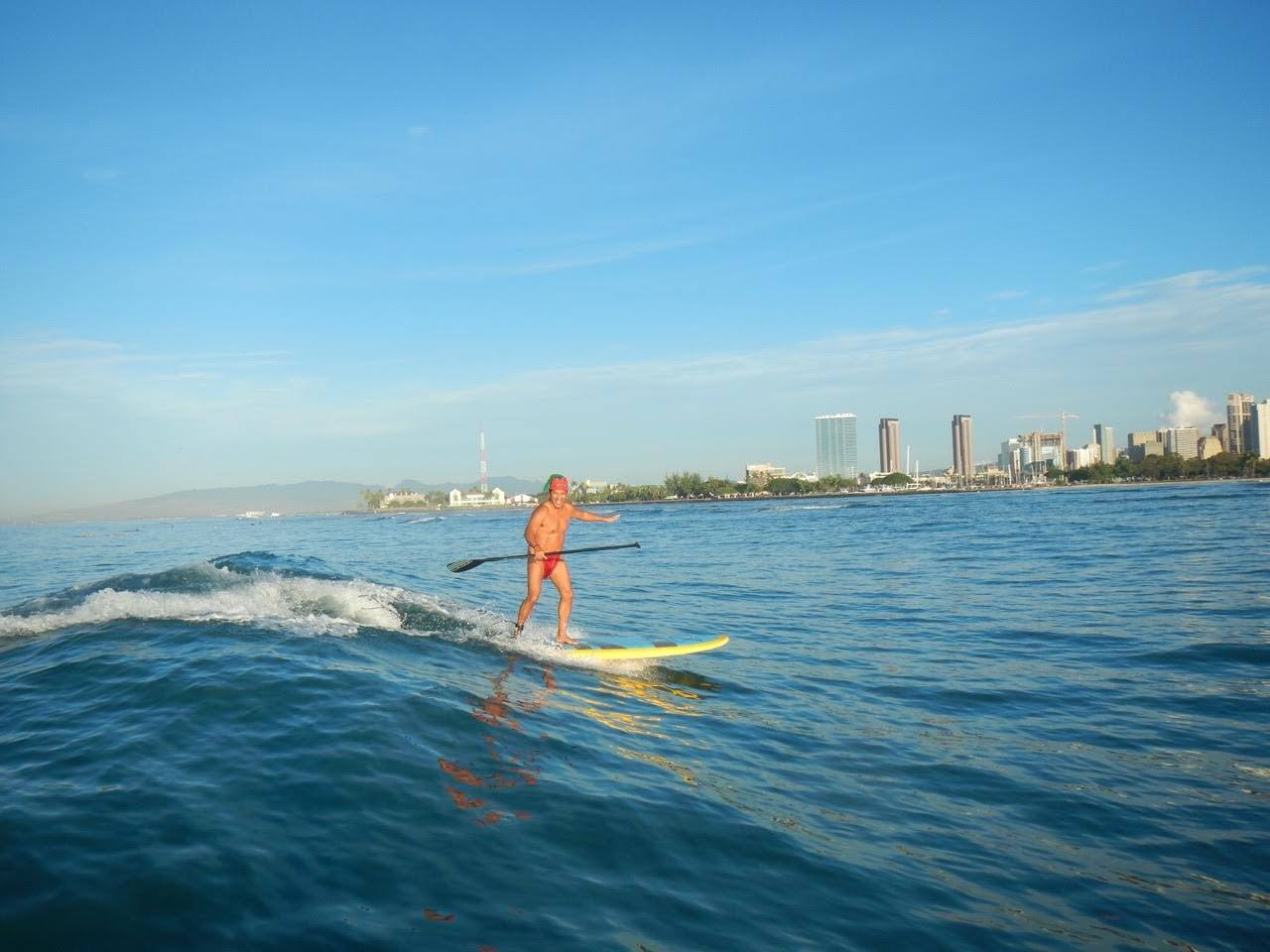
Tips for Wave Mastery on a SUP Progress in SUP surfing comes with practice and patience. Begin with smaller waves to build confidence, master paddle use for balance and steering, and respect surf etiquette to ensure safety and harmony in the water.
SUP Surfing Etiquette Understanding and adhering to surfing etiquette, such as wave priority and lineup manners, ensures a respectful and enjoyable experience for all surfers.
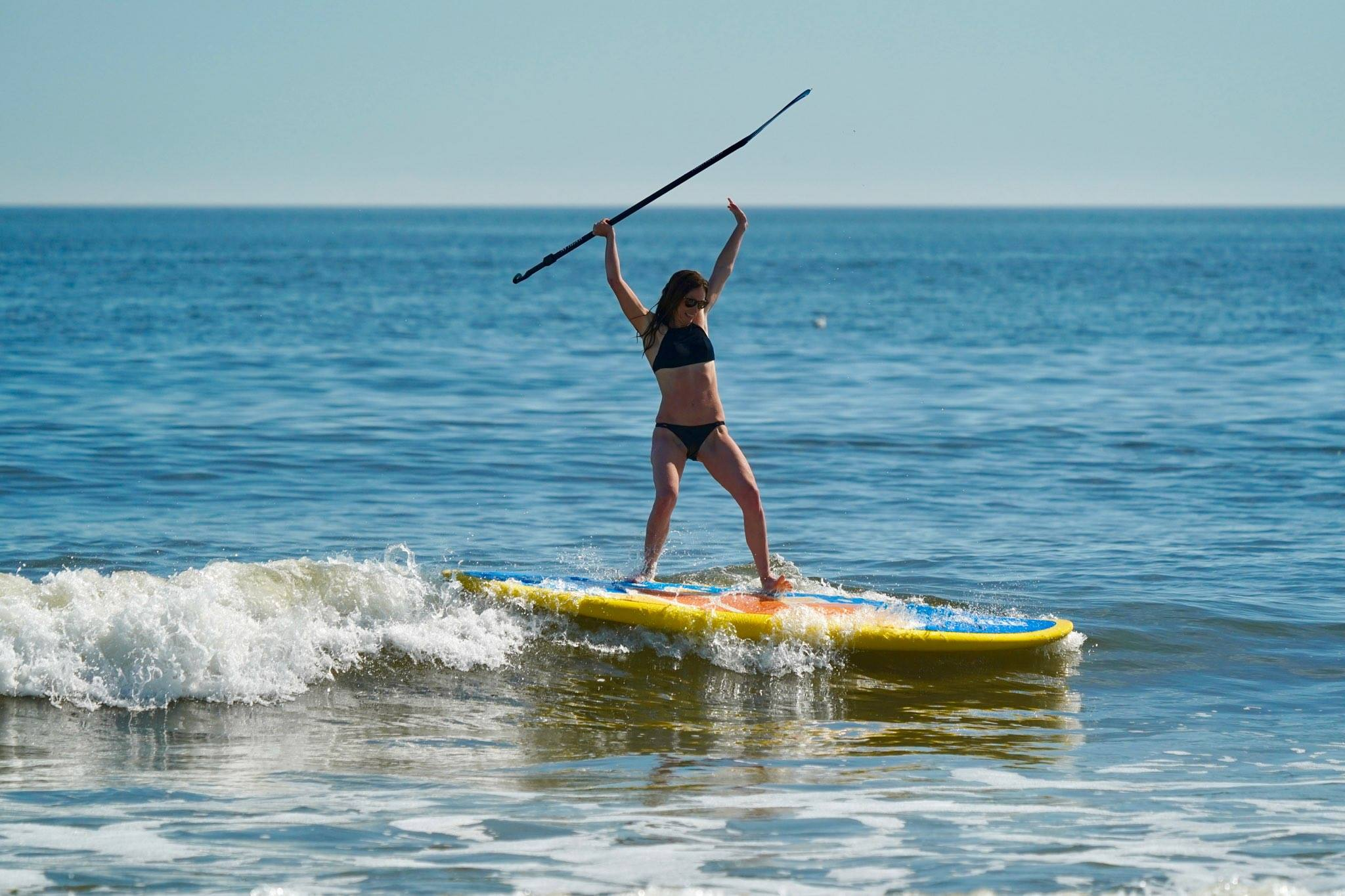
Choosing a SUP Surfing Spot Consider wave conditions, crowd levels, and local regulations when selecting a surf spot, prioritizing safety and suitable conditions for your skill level.
Safety Measures for SUP Surfing Always prioritize safety by wearing a leash, checking conditions beforehand, paddling with companions, and respecting your limits.
Embark on your SUP surfing journey with the right preparation and respect for the sport's nuances. Whether you're navigating the gentle breaks of a local beach or the challenging swells of renowned surf spots, SUP surfing offers a thrilling and rewarding way to engage with the world's waterways. Explore our selection of SUP boards tailored for surfing and begin your wave-riding adventures with confidence.

